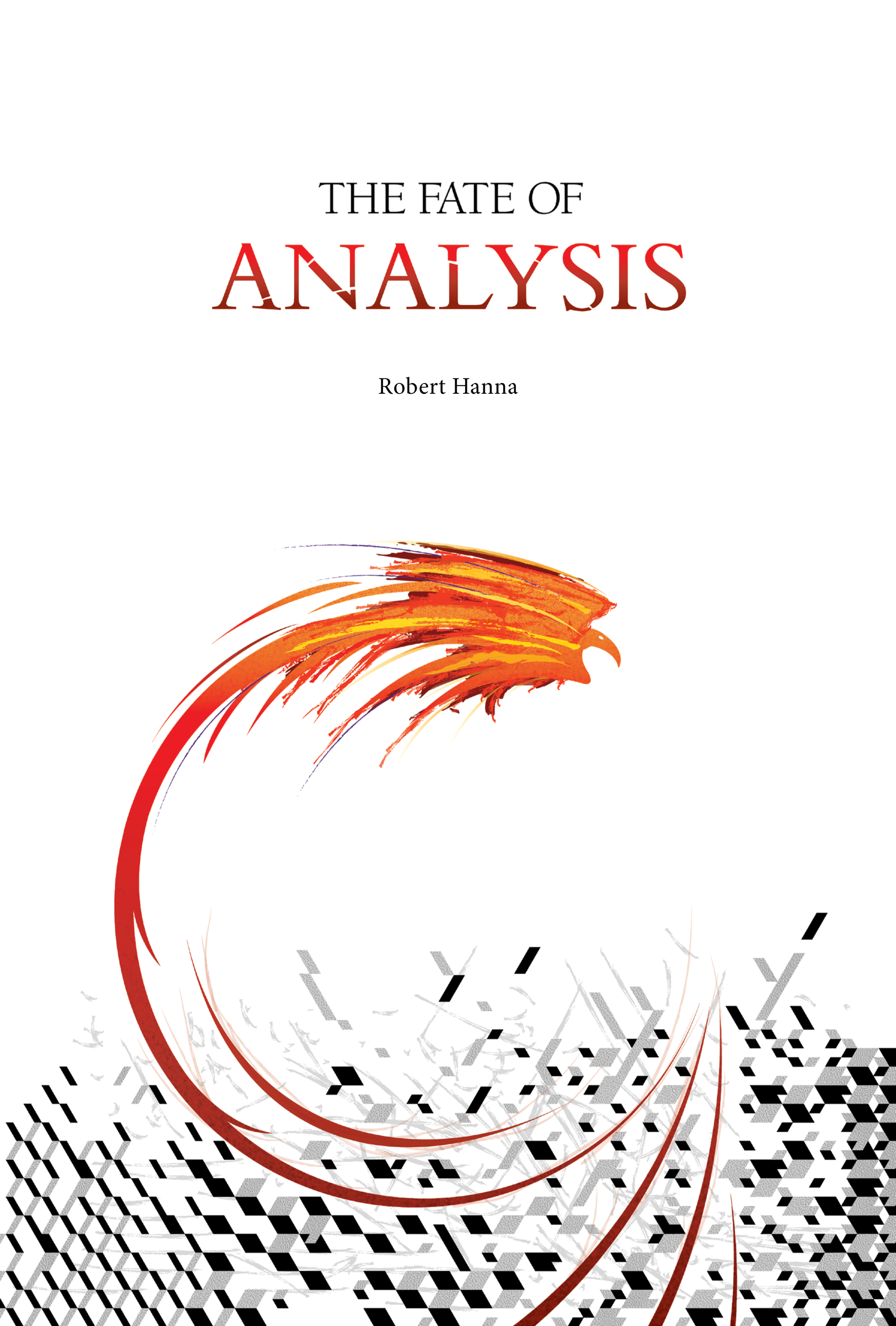KNOWLEDGE: sufficiently justified true belief, in the larger context of human or non-human animal cognition or intentionality.
*Controversy: This is a non-standard definition of “knowledge,” in that it bears witness to the fact that since many non-rational human or non-human animals can know things in a perfectly legitimate sense of that term—for example, human babies named “Bethie,” and cats named “Sweetpea,” can know the people who look after them—there are also perfectly acceptable uses of “know,” “knowing,” and “knowledge” that do not entail either belief or justification, but rather entail only veridical and contextually reliable cognition.
See also the entries on “cognition,” “epistemology,” and intentionality.”*
ELABORATION
The theory of knowledge I’ll describe and defend is called categorical epistemology.
But before I can do that, I need to describe and defend my belief in the primitive fact of what I call categorical normativity, which inheres in all rational human intentionality whatsoever—including all rational human consciousness, mental content, belief, and knowledge.
What is this primitive fact?
Normativity, as I am understanding it, consists in the fact that all minded animals, whether merely sentient (conscious minimal agents) or also sapient (self-consciously conscious, rational agents), have desires, aims, commitments, ends, goals, ideals, and/or values.
Now insofar as sapient or rational minded animals naturally treat these aims, commitments, ends, goals, ideals, and/or values as rules or principles for guiding theoretical inquiry and practical enterprises, as reasons for justifying beliefs and intentional actions, and also as standards for critical evaluation and judgment, then at least some of those rules, principles, reasons, and standards are non-instrumental, unconditional, desired for their own sake as an end-in-themselves, non-pragmatic, non-prudential, and obtain no-matter-what-the-consequences.
These are categorical norms, and my claim is that they necessarily inhere in all rational human caring.
Categorical norms are perfectly consistent with norms that are instrumental, conditional, desired for the sake of other ends, pragmatic, prudential, or obtain only in virtue of good consequences.
Nevertheless, categorical norms are necessarily underdetermined by all other sorts of norms—that is, categorical norms do not strongly supervene on any other sorts of norms—and therefore they cannot be assimilated to or replaced by those other sorts of norms.
Correspondingly, categorical norms provide overriding reasons for belief and intentional action.
In order to make my next point, I’ll have to pause briefly to define strong supervenience—again, this previews the entries under “supervenience,” but also again, they’re worth repeating.
Strong supervenience[1] is a strict determination-relation between sets of properties of different ontological “levels,” a relation that is weaker than strict property-identity, and is usually taken to be asymmetric, although two-way or bilateral strong supervenience is also possible.
But assuming for the purposes of simpler exposition that strong supervenience is asymmetric, then, more precisely, B-properties (= the higher level properties) strongly supervene on A-properties (= the lower-level properties) if and only if (i) for any property F among the A-properties possessed by something X, F necessitates X’s also having property G among the B-properties (upwards necessitation), and (ii) there cannot be a change in any of X’s B-properties without a corresponding change in X’s A-properties (necessary co-variation).
It follows from strong supervenience that any two things X and Y share all their A-properties in common only if they share all their B-properties in common (indiscriminability).
For example, if heat strongly supervenes on mean molecular motion, then two things have the same kinetic molecular properties in common only if they have the same temperature properties in common.
Facts are just actual or possible instantiations of properties.
Hence strong supervenience for properties entails strong supervenience for facts, and failures of strong supervenience for properties correspondingly entails failures of strong supervenience for facts.
Now logical strong supervenience is strong supervenience that also obtains with logical, analytic, or conceptual a priori necessity.
The strict “downwards identity” of higher-level properties with corresponding lower-level properties entails logical strong supervenience; but logical strong supervenience is also consistent with the multiple instantiability or realizability of the same higher-level properties across different lower-level properties, hence consistent with “downwards non-identity.”
For example, even if human body heat logically strongly supervenes on mean molecular motion inside the human body, it remains conceivable and possible that the very same temperature properties are instantiated or realized in humanoids made out of quite different kinds of stuff that nevertheless plays the same mean-molecular-motion role—for example, the “replicants” imagined in Philip K. Dick’s classic science fiction novel, Do Androids Dream of Electric Sheep? and in Ridley Scott’s equally classic sci-fi movie, Blade Runner.
Hence logical strong supervenience is the most inclusive reductive metaphysical relation.
Now, here’s the point I want to make by using the notion of logical strong supervenience.
If a norm really is categorical, then it cannot be reduced to contingent physical facts or natural causal laws by means of logical strong supervenience.
This is shown by the following reductio argument.
-
Suppose that categorical norms were reducible to contingent physical facts or natural causal laws.
-
Contingent physical facts and natural causal laws are inherently conditioned by, and conditional upon, the actual spatiotemporal locations of those facts and the actual constitution and distribution of matter and forces in the physical world, whereas categorical norms are inherently unconditioned and unconditional.
-
But the explanatory reduction of X to Y entails showing that X is, at the very least, logically strongly supervenient on Y,
-
So by the initial supposition made in 1., categorical norms would then be logically strongly supervenient on inherently conditioned, conditional facts.
-
But then categorical norms would be both inherently unconditioned and unconditional and also strictly dependent on what is inherently conditioned and conditional, which is a contradiction.
-
Therefore, categorical norms cannot be reduced to contingent physical facts or natural causal laws, by reductio ad absurdum as applied to the initial supposition made in 1.[2]
Against that theoretical backdrop, I’ll now describe and defend categorical epistemology.
In what follows, by a conscious-evidence-based reason, I mean a reason that is based on evidence provided by a conscious act, state, or process.
And by a conscious act, state, or process I mean a subjectively-experienced, intentionally-directed mental act, state, or process.
Thus reasons that are based on our capacities for sense perception, memory, imagination, apperception or self-conscousnes or self-reflection, judgment (including the reception of testimony), deductive inference, inductive inference, abductive inference, mathematical intuition, logical intuition, or philosophical intuition, are all conscious-evidence-based reasons.
My account of the nature of knowledge, categorical epistemology, is robustly and indeed categorically normative in character, and it also flows naturally from the widely-known and almost universally-accepted “Gettier counterexamples” to the classical analysis of knowledge, according to which knowledge is the same as justified true belief.[3]
Duncan Pritchard and others have correctly pointed out that the Gettier cases show that the classical analysis of knowledge leaves justified true belief open to luck, that is, to merely accidental or contingent connections between justifying evidence and the truth-makers of beliefs.
Hence, in addition to justified true belief, authentic knowledge further requires the satisfaction of an anti-luck, or externalist, condition.
Pritchard and others have also correctly pointed out that the classical analysis of knowledge fails to require that cognitive subjects acquire their justifying evidence via properly-functioning cognitive capacities or mechanisms.
Hence authentic knowledge also requires the satisfaction of cognitive virtues, or virtue epistemology, condition.[4]
What I’ll call High-Bar knowledge includes maximally strong versions of both the anti-luck condition and the cognitive virtues condition alike, as well as requiring the satisfaction of an evidential-phenomenological, or internalist, condition, and in this way it also rules out global or radical skepticism.
Here’s what I mean by all that.
The simplest kind of Gettier counterexample goes like this.
I look at my iPhone, and it says that it is 7:00 am.
And I know by experience that my iPhone has been working fine for months.
So I have a conscious-evidence-based reason for asserting that it is 7:00 am.
And, as it happens, it really is 7:00 am.
But, unbeknownst to me, my iPhone has been broken since 7:00 pm last evening, when, by a malfunction of the digital mechanism, it started reading 7:00 am and froze at that setting; and I have not looked at it since then.
So even though I have a conscious-evidence-based reason for asserting that it is 7:00 am, and it is true that it is 7:00 am, and I believe that it is 7:00 am, I do not know that it is 7:00 am.
So, it would seem that knowledge is not justified true belief.
How should we understand this result?
My own take on the Gettier counterexamples is that although knowledge really is justified true belief, the counterexamples initially suggest the opposite, by trading on a special internal normative feature of the concepts and facts of epistemic justification and knowledge: epistemic justification and knowledge are normatively two-dimensional, in the sense that by their very nature they are either Low-Bar or High-Bar.
Let me now, in turn, explain what I mean by this.
Low-Bar. The “Low-Bar” dimension of epistemic justification allows for justification to be more or less detached from truth, and means: “whatever provides a conscious-evidence-based reason for the believer to assert her belief-claim, even if that belief turns out false,” in which case that belief obviously is not knowledge in the normatively highest sense.
But most importantly for the Gettier counterexamples, what I’ll call Low-Bar justification is also consistent with cases (like the broken iPhone case) in which the believer’s claim is actually true, yet that actual truth is neither inherently or intrinsically connected to the believer’s conscious-evidence-based reason for asserting her belief-claim, nor even in a context-sensitive way, causally reliably connected to the believer’s conscious-evidence-based reason for asserting her belief-claim.
Otherwise put, the truth of the claim in these cases is only accidentally or contingently connected to the believer’s conscious-evidence-based reason for asserting her belief-claim.
That’s Low-Bar justification.
Now this clearly and distinctly points up the fact that knowledge in the normatively highest sense, or what I will call High-Bar knowledge, requires an inherent or intrinsic connection—i.e., a non-accidental or necessary connection—between the truth of a believer’s belief-claim and a believer’s sufficient conscious-evidence-based reason for asserting her belief-claim, as delivered by her properly-functioning cognitive capacities or mechanisms.
That is, it requires what I call High-Bar justified true belief.
This is because in the cases in which there is only an accidental or contingent connection, the believer’s belief-claim could just as easily have been false with no change whatsoever in the believer’s conscious-evidence-based reason for asserting her belief-claim.
So knowledge in the normatively highest sense, that is, High-Bar justified true belief, is not the same as Low-Bar knowledge, which involves justified true belief in the Low-Bar sense only.
In that sense, High-Bar knowledge is not Low-Bar justified true belief, although High-Bar knowledge still is and always will be High-Bar justified true belief.
Correspondingly, Low-Bar knowledge still is and always will be Low-Bar justified true belief.
Hence, provided that we keep our bar-levels straight, knowledge really is justified true belief.
High-Bar. By sharp contrast, then, the “High-Bar” dimension of knowledge and justification requires that belief be inherently or intrinsically connected to truth, via the properly-functioning cognitive capacities or mechanisms of the cognitive subject, and means: “whatever provides a sufficient conscious-evidence-based reason for the believer to assert her belief-claim, via her properly-functioning cognitive capacities or mechanisms, and also is inherently or intrinsically connected to the truth of that belief-claim.”
Otherwise put, High-Bar knowledge has the following three fundamental features.
First, belief is self-evident, i.e., intrinsically compelling, thereby satisfying an evidential-phenomenological or internalist condition on authentic knowledge.
Second, this self-evidence is informationally delivered to belief by a properly-functioning cognitive capacity or mechanism, thereby satisfying a cognitive virtues condition on authentic knowledge.
And third, belief provides a non-accidental or necessary tie to the truth-makers of belief, thereby satisfying an anti-luck or externalist condition on authentic knowledge.
An example of High-Bar knowledge would be a case that is radically different from any sort of Gettier case, and also radically different from any other sort of “bad” epistemic case involving falsity or failed justification.
In this all-around good epistemic case, as a paradigm, and indefinitely many others relevantly like it, I objectively know, via basic authoritative a priori objectively necessarily true mathematical rational intuition, that
3+4=7, i.e., | | | + | | | | = | | | | | | |
and thereby achieve High Bar a priori knowledge.
Now by an essentially reliable cognitive capacity or mechanism, I mean a cognitive capacity or mechanism that tracks truth counterfactually and in a context-sensitive way across all relevantly similar metaphysically possible worlds.
So High-Bar justified true belief is the same as High-Bar knowledge, precisely because justification occurs by means of an essentially reliable cognitive capacity or mechanism, in this case, basic authoritative mathematical rational intuition.
This paradigmatically good epistemic case should also be distinguished from another variant case in which my iPhone says it is 7:00 am, and my iPhone is still working fine, and it is actually 7:00 am, and I believe that it is 7:00 am, and it is also the case that (i) whenever, in relevantly similar cases, it were to be such-and-such a time, call it T, and I looked at my my iPhone and it read “T,” then I would believe that it is T, and (ii) whenever, in relevantly similar cases, it were, by some salient difference, not to be T and I looked at my iPhone, yet my iPhone still read “T,” then I would not believe that it is T and would instead believe that my iPhone was malfunctioning.
So I know that it is 7:00 am, because my conscious evidence for asserting my belief is connected to the truth of that belief-claim with context-sensitive causal reliability.
Now by a context-sensitive causally reliable cognitive capacity or mechanism I mean a cognitive capacity or mechanism that tracks truth in the actual world, and also counterfactually and in a context-sensitive way across all relevantly similar nomologically possible worlds.
In this “pretty good” case, then, the context-sensitive causally reliable cognitive capacity or mechanism is my capacity for veridical, direct sense perception,together with a further online—that is, currently properly functioning—capacity of mine for detecting salient breakdowns of my iPhone whenever they occur.
But context-sensitive causally reliable knowledge, “pretty good” though it is, is not the normatively best or highest kind of knowledge, precisely because the connection between my conscious-evidence-based reason and the truth-maker of my belief is not inherent or intrinsic.
On the one hand, context-sensitive causally reliable knowledge is open to global skeptical worries: in at least some introspectively indistinguishable, conceivably possible worlds containing the very same conscious-evidence-based reason, that belief is instead connected to a falsity-maker, not a truth-maker.[5]
And on the other hand, even given context-sensitive causally reliable knowledge, it is not as if my capacity for veridical, direct sense perception, together with my capacity to detect salient iPhone breakdowns, completely convincingly, intrinsically compellingly, or self-evidently “locks onto” the context-sensitive causal sequence that ties my well-functioning iPhone to the US standard atomic clock (or whatever) that grounds it.
That is, even given context-sensitive causally reliable knowledge, it’s not as if I have rational insight into the underlying structure of what connects my conscious-evidence-based reason for believing to the truthmaker of my belief.
Indeed, my conscious-evidence-based reason for believing could be epistemically flawed in various ways, including greater or lesser irrelevance to the situation at hand, greater or lesser superficiality, greater or lesser triviality, or more or less obvious formal inconsistency with other beliefs I hold.
This point is also brought out clearly, although in a sense unintentionally, by Keith Lehrer’s well-known “Truetemp” thought-experiment, whose explicit aim is to show that context-sensitive causally reliable true belief is not the same as knowledge.[6]
Lehrer’s example describes a context-sensitive causally reliable temperature-reading device connected (unbeknownst to Mr Truetemp himself) to Mr Truetemp’s brain, that together with his brain yields a context-sensitive causally reliable cognitive capacity or mechanism for his beliefs about temperature.
This example, in turn, is supposed to trigger our judgment that Mr Truetemp’s context-sensitive causally reliable true beliefs about temperature are not knowledge.
But in fact, what the Truetemp case shows, just like my iPhone case, is simply that context-sensitive, causally reliable Low-Bar knowledge, even though it is pretty good, is not the same as High-Bar knowledge.
Otherwise put, my context-sensitive causally reliable perceptual knowledge that it is 7:00am by looking at my iPhone is not essentially reliable, as it is in the paradigmatically good epistemic case where I know that
3+4=7, i.e., | | | + | | | | = | | | | | | |
via basic authoritative mathematical rational intuition.
In this way, what the Gettier counterexamples and their variant cases show us are four distinct synthetic a priori philosophical truths about knowledge.
First, High-Bar knowledge is not the same as Low-Bar knowledge, that is, High-Bar knowledge is not the same as Low-Bar justified true belief.
Second, High-Bar knowledge is also not the same as context-sensitive causally reliable Low-Bar knowledge, that is, High-Bar knowledge is not the same as context-sensitive causally reliable Low-Bar justified true belief, which in turn is distinct from mere Low-Bar knowledge, or Low-Bar justified true belief.
Third, High-Bar knowledge is the same as High-Bar justified true belief, or essentially reliable justified true belief.
Fourth and finally, Low-Bar knowledge is the same as Low-Bar justified true belief; context-sensitive causally reliable Low-Bar knowledge is the same as context-sensitive causally reliable true belief; and High-Bar knowledge is the same as High-Bar justified true belief.
Therefore, provided we keep our bar-levels straight, knowledge really is justified true belief.
The leading notion of categorical epistemology is what I’m calling High-Bar knowledge.
Any theory of knowledge that adequately establishes an inherent or intrinsic connection between the sufficient conscious-evidence-based reason for a believer’s assertion of her belief-claim, via her properly-functioning cognitive capacities or mechanisms, and the truth of her belief, also shows that this is an essentially reliable belief.
This theory thereby constitutes an adequate philosophical explanation of the highest kind of knowledge, which in turn counts as the highest good, or summum bonum, of epistemology.
And that’s High-Bar knowledge.
Furthermore, the categorical epistemology conception of a philosophical explanation of the normatively best and highest kind of knowledge—that it adequately establishes an inherent or intrinsic connection between the sufficient conscious-evidence-based reason for a believer’s assertion of her belief-claim, via her properly-functioning cognitive capacities or mechanisms, and the truth of her belief—is (perhaps surprisingly) largely compatible with Timothy Williamson’s highly plausible “knowledge first” approach to epistemology in Knowledge and its Limits.[7]
There are three reasons for this large measure of compatibility, all of which flow directly from categorical epistemology.
First, High-Bar knowledge—i.e., intrinsically compelling, cognitively virtuous, essentially reliable justified true belief—which is the normatively highest kind of knowledge, is the primitive, non-analyzable, irreducible, immanently structured, and categorically normative highest good and ideal standard of rational human cognition with which epistemology is fundamentally concerned.
Second, High-Bar justification contains the three basic elements of (i) intrinsically compelling, cognitively virtuous, essentially reliable justification, (ii) truth, and (iii) belief, and these are the metaphysically non-detachable, essentially-related elements of High-Bar Knowledge.
And third, a priori knowledge via basic authoritative objectively necessarily true rational intuition is the perfection of our capacities for rational human cognition, and therefore counts as the normative paradigm of High-Bar Knowledge.
Or in other words, categorical epistemology is a perfectionist Kantian morality of essentially embodied rational human cognition.
No doubt, Williamson would sharply disagree with me about the robust rational normativity of authentic a priori knowledge.
But at the same time, we do both hold that knowledge as such is a primitive, non-analyzable, irreducible cognitive phenomenon with which all serious explanatory epistemology must begin, even though I would contend, contra Williamson, that the non-analyzability of the proper parts of the cognitive phenomenon of knowledge is explained by their being connected synthetically a priori.
Furthermore, we do agree that knowledge is inherently mentalistic and factive.
So there is significant philosophical common ground shared between us, alongside some important differences.
More generally, categorical epistemology is both non-trivially similar to and also non-trivially dissimilar to other contemporary approaches to epistemology.
On the one hand, categorical epistemology shares with virtue epistemology[8] and other recent or contemporary practically-oriented approaches to epistemology[9] the basic idea that both the ascription and also the actual occurrence of human knowledge have the following characteristics: they are inherently sensitive to our properly-functioning cognitive capacities or mechanisms; inherently motivated by rational human interests; inherently governed by rational human ideals, values, and reasons (i.e., norms); and ultimately grounded on the real fact of (or in at least the non-eliminable conception of ourselves as having) free agency.
But on the other hand, categorical epistemology sharply differs from other practically-oriented approaches to human knowledge in the following respect.
According to categorical epistemology, the principles of rational human animal knowledge are grounded on categorically normative principles, which in turn are all ultimately subsumable under the Categorical Imperative.
Hence the governing norms of knowledge are explicitly and irreducibly categorical—i.e., unconditional, strictly universal, non-instrumental, and a priori—and also ultimately constrained by the Categorical Imperative.
Correspondingly, it should also be fully noted that the fundamental distinction in categorical epistemology between High-Bar justification and knowledge, and Low-Bar justification and knowledge, is itself only a specification of a more general and necessary structure of human rationality, which I call Two-Dimensional rational normativity.
Two-Dimensional rational normativity is the fact that the conditions on normative evaluations of rationality fall into two importantly different kinds: (1) Low-Bar rational normativity: the necessary and sufficient conditions for minimal or nonideal rationality, which include the possession of online, uncompromised versions of all the cognitive and practical capacities constitutive of intentional agency, and (2) High-Bar rational normativity: the necessary and sufficient conditions for maximal or ideal rationality, which include all the necessary and sufficient conditions for Low-Bar rational normativity as individually necessary but not jointly sufficient conditions, and also include the perfection, or correct and full self-realization, of all the cognitive and practical capacities constitutive of intentional agency, as individually necessary and jointly sufficient conditions.
Non-satisfaction of the conditions for *Low-*Bar rational normativity entails non-rationality and non-agency.
As we’ll see later in this entry, in a certain special range of cases of the non-satisfaction of the conditions for Low-Bar knowledge, Low-Bar rational normativity further allows for the possibility of what, following Frank Hofmann,[10] I’ll call Non-Conceptual Knowledge, in non-human animals such as cats or horses, and also in non-rational human animals such as infants or unfortunate adult victims of various pathological cognitive conditions.
Nevertheless, by sharp contrast, it’s not the case that non-satisfaction of the conditions of *High-*Bar rational normativity entails either non-rationality or non-agency.
This point, in turn, makes it possible to see the fundamental flaw in One-Dimensional theories of rational normativity very clearly, no matter how plausible and sophisticated these theories might otherwise be.[11]
According to a One-Dimensional theory, any failure to meet the ideal standards of rational normativity entails non-rationality, non-agency, and non-responsibility.
To be sure, on a sophisticated One-Dimensional theory, there can be a continuum of degrees of rationality with a variety of significant thresholds along the way. But the basic fact remains that in a One-Dimensional framework, any degree of rationality short of the ideal standards is to that extent non-rational.
Or in other words, if you aren’t ideally or perfectly rational, then you’re a rationally defective or irrational animal, and off the hook.
For example, if you fail to know in the highest sense (i.e., if you fail to have High-Bar justified true belief), then you aren’t in any sense a rational or responsible cognitive agent, although you may approach that epistemically blessed state to a greater or lesser degree.
Or if you fail to choose and act in the practically or morally highest way (i.e., if you fail to have a good will in Kant’s sense), then you aren’t in any sense a rational or responsible practical or moral agent, although you may approach that morally blessed state to a greater or lesser degree.
Disastrously, these results of One-Dimensionalism play directly into the hands of radical cognitive, practical, and moral skeptics, since as a matter of fact no actual rational human animal ever manages to meet all or even most of the High-Bar standards of rational normativity, but instead is doing extremely well indeed if they ever manage to meet some of them—for example, successfully performing some basic authoritative a priori objectively necessarily true rational intuitions in mathematics, logic, or philosophy.
How convenient for the radical skeptic, then, that most or all of us, most or all of the time, turn out to be irrational animals.
Perhaps even more disastrously, these results also play directly into the hands of “human, all too human” intentional agents looking for a fast track out of their everyday cognitive and practical difficulties in a thoroughly nonideal actual natural world.
How convenient for them that falling short of rational perfection should entail the suspension of responsibility.
If rationality—like God—is dead, then everything is permitted, and they can take the nihilist’s way out, like the pathetically wicked character Smerdyakov in The Brothers Karamazov:
“Take that money away with you, sir,” Smerdyakov said with a sigh.
“Of course, I’ll take it! But why are you giving it to me if you committed a murder to get it?” Ivan asked, looking at him with intense surprise.
“I don’t want it at all,” Smerdyakov said in a shaking voice, with a wave of the hand. “I did have an idea of starting a new life in Moscow, but that was just a dream, sir, and mostly because ‘everything is permitted’. This you did teach me, sir, for you talked to me a lot about such things: for if there’s no everlasting God, there’s no such thing as virtue, and there’s no need of it at all.
Yes, sir, you were right about that. That’s the way I reasoned.”[12]
For these reasons, then, it’s clear and distinct that One-Dimensional theories of rational normativity are false.
On The Two-Dimensional theory, however, things are very different.
Satisfaction of the conditions for Low-Bar rational normativity is a necessary and sufficient condition of the cognitive, practical, and moral responsibility of intentional agents, but it does not guarantee that any of the further conditions of High-Bar rational normativity are actually satisfied.
In other words, it is fully possible for an intentional agent to be minimally and nonideally rational, but in a bad or wrong way, to any degree of badness or wrongness, all the way down to the lowest limiting case of cognitive or practical monstrosity within its kind.
For example, at any point short of the limiting case of an utter disregard for, and a complete inability to heed, any and all canons of reasonable belief, truth, and validity/consistency in logical reasoning—at any point short of sheer madness—the intentional agent remains cognitively responsible to some degree.
So too at any point short of the limiting case of an utter disregard for, and a complete inability to heed, any and all moral principles grounded on the dignity of human persons, and any and all canons of validity/consistency in practical reasoning—at any point short of sheer sociopathy or the complete disintegration of agentive coherence—the intentional agent remains morally and practically responsible to some degree.
Correspondingly, it’s also fully possible for an intentional agent to be minimally and nonideally rational in a good or right way, to any degree of goodness or rightness, all the way up to the highest limiting case of cognitive or practical perfection within its kind—for example, successfully performing some basic authoritative a priori objectively necessarily true rational intuitions in mathematics, logic, or philosophy—for all of which, again, the intentional agent is also fully cognitively and practically responsible.
As my discussion so far implies, explicitly situating categorical epistemology within the framework of Two-Dimensional rational normativity yields a fourfold classification of different, basic, normatively-graded kinds of cognition.
This fourfold classification comes clearly into view when we recognize the notion of context-sensitive causal reliability, together with the fact that certain kinds of cognitive acts or states in non-human animals, and in non-rational human animals, fall short of Low Bar knowledge, yet still include what I call essentially non-conceptual content and direct sense perception,[13] and also a context-sensitive causally reliable cognitive mechanism for evidentially connecting sense perception with its worldly objects.
So non-human animals, non-rational human animals, and rational human animals all share the minimally basic epistemic capacities, and by exercising those capacities well, they thereby can all achieve Non-Conceptual Knowledge.
In a nutshell, my rationale for this claim is grounded on the following three points.
First, direct sense perception based on essentially non-conceptual content is perceptual knowledge by acquaintance.
Second, perceptual knowledge by acquaintance is genuine knowledge in at least three important senses, namely (i) that it guarantees an essentially reliable, non-accidental connection between cognition and the world, (ii) that it involves the successful exercise of the minimally basic epistemic capacities, and (iii) that its cognitive phenomenology is maximally evidential in that context.
Third, therefore direct sense perception based on essentially non-conceptual content is also genuine knowledge in at least three important senses, even though it fails the belief condition and the truth-condition on Low Bar knowledge and High Bar Knowledge.
More explicitly, then, the larger Two-Dimensional framework that comprehends categorical epistemology provides for a non-conceptual, non-doxastic, non-alethic, and distinctively different fourth kind of minimally basic epistemic activity, namely Non-Conceptual Knowledge, to go along with mere Low-Bar knowledge, with context-sensitive causally reliable Low-Bar knowledge, and with High-Bar knowledge.
Non-Conceptual Knowledge is similar in several important ways to what Ernest Sosa calls “animal knowledge” but with two crucial additions: first, Non-Conceptual Knowledge is cognitively driven by essentially non-conceptual content, and second, it both occurs and also makes sense only within the larger four-levelled, Two-Dimensional explanatory framework of categorical epistemology, whereas Sosa’s explanatory framework utilizes a more compact binary contrast between animal knowledge and reflective knowledge.[14]
As such, some classes of cases of Sosa’s animal knowledge fall under Non-Conceptual Knowledge, and some of them fall under one or another of the kinds of Low-Bar knowledge.
Correspondingly, some classes of cases of Sosa’s reflective knowledge fall under the more internalistically-sophisticated kinds of Low-Bar knowledge, and some of them fall under High-Bar knowledge.
All things considered, I do think that Sosa’s “virtue reliabilist” account is in many ways fundamentally correct, but I also think that the more complex structure of categorical epistemology, embedded within a cognitive-semantic theory of essentially non-conceptual content and conceptual content, ultimately does more explanatory work, and also characterizes the highest kind of knowledge more completely.
In what follows, by a contingently reliable cognitive capacity or mechanism I mean a cognitive capacity or mechanism that tracks truth in the actual world.
The notion of a contingently reliable cognitive capacity or mechanism can then be put alongside the two notions of a context-sensitive causally reliable cognitive capacity or mechanism and an essentially reliable cognitive capacity or mechanism, that I previously formulated.
Granting all that, then here are contextual-definition-style formulations of the four basic kinds of knowledge recognized by categorical epistemology: (i) Non-Conceptual Knowledge: Perception P in an animal subject S is Non-Conceptual Knowledge if and only if (ia) P is based on essentially non-conceptual content, and (ib) S possesses a properly-functioning and context-sensitive causally reliable cognitive capacity or mechanism that yields S’s conscious evidence E for P, (ii) Low-Bar Knowledge: Belief B in an animal subject S is Low-Bar Knowledge if and only if (iia) B is true, (iib) S possesses a properly-functioning and at least contingently reliable cognitive capacity or mechanism that yields S’s conscious evidence E for B, and (iic) S has a reason for asserting B based on E, i.e., S has a Low-Bar justification for B, (iii) Context-Sensitive Causally Reliable Low-Bar Knowledge: Belief B in an animal subject S is context-sensitive causally reliable Low-Bar Knowledge if and only if (iiia) B is true, (iiib) S possesses a properly-functioning and context-sensitive causally reliable cognitive capacity or mechanism that yields S’s conscious evidence E for B, and (iiic) S has a reason for asserting B based on E, i.e., S has a Low-Bar justification for B, and (iv) High-Bar Knowledge: Belief B in an animal subject S is High-Bar Knowledge if and only if (iva) B is true, (ivb) S possesses a properly-functioning and essentially reliable cognitive capacity or mechanism that yields S’s intrinsically compelling conscious evidence E for B, and (ivc) S has a sufficient reason for asserting B based on E, i.e., S has a High-Bar justification for B.
This fourfold classification of kinds of cognition combines elements of epistemic internalism, epistemic externalism, virtue epistemology, and contextualism[15] within the progressively larger frameworks of categorical epistemology and Two-Dimensional rational normativity, while also sustaining the classical thesis that (conceptual, doxastic, rational) knowledge is justified true belief.
In this connection, it should be specifically noted that although Non-Conceptual Knowledge isn’t in any way subject to Gettier considerations—that is, it isn’t subject to the possibility of a merely accidental or contingent connection between conscious evidence and the world—nevertheless Non-Conceptual Knowledge is neither conceptual nor doxastic, and therefore neither “in the logical space of reasons,”[16] nor directly subject to the constraints of of even Low-Bar rational normativity.
So Non-Conceptual Knowledge flows from the successful exercise of minimally basic epistemic capacities, and is knowledge in a genuine sense—namely, the sense in which “knowledge by acquaintance” is genuine knowledge.
Moroever, Non-Conceptual Knowledge constitutes a kind of essentially and also context-sensitively causally reliable animal cognition that grounds all the other kinds of knowledge.
Furthermore, Non-Conceptual Knowledge anticipates some of the necessary features of rational human knowledge in the normatively highest sense.
Nevertheless, Non-Conceptual Knowledge is at most pre-rational and proto-rational.
Therefore, strictly speaking, it’s neither Low-Bar knowledge nor High-Bar knowledge.
At the same time, however, although Low-Bar Knowledge is indeed “in the logical space of reasons,” and thereby subject to the constraints of rational normativity, it’s open both to Gettier considerations, and also to global skeptical worries.
More specifically, in some introspectively indistinguishable conceivably possible worlds, the very same conscious-evidence-based reason for S’s belief is connected to a falsity-maker, not a truth-maker.[17]
Thus Low-Bar Knowledge falls well short of knowledge in the normatively highest sense.
By sharp contrast to both Non-Conceptual Knowledge and Low-Bar Knowledge, however, High-Bar Knowledge is not only “in the logical space of reasons,” and thereby subject to the constraints of rational normativity, and both contingently and causally reliable: it’s also essentially reliable, as well as sufficiently justified by a conscious-evidence-based reason, via a properly-functioning cognitive capacity or mechanism.
High Bar Knowledge is thereby impervious to Gettier worries and to global or radical skepticism alike.
Hence, again, High-Bar Knowledge is the highest good or summum bonum of epistemology.
Now, what about context-sensitive causally reliable Low-Bar knowledge?
If S possesses knowledge in this sense, then S possesses context-sensitive causally reliable Low-Bar a posteriori knowledge, which is a pretty good kind of knowledge to have—say, via trustworthy testimony—but at the same time context-sensitive causally reliable Low-Bar knowledge is without complete conviction, intrinsic compellingness, or self-evidence, and also without essential reliability.
For one thing, just as with Low-Bar Knowledge, so too with context-sensitive causally reliable Low-Bar knowledge, in some introspectively indistinguishable conceivably possible worlds, the very same conscious-evidence-based reason for S’s belief is connected to a falsity-maker, not a truth-maker.
This possibility leaves context-sensitive causally reliable Low-Bar knowledge wide open to radical or global skepticism.
And for another thing, as I pointed out above, because context-sensitive causally reliable Low-Bar knowledge doesn’t necessarily include rational insight into the underlying structure of what connects S’s conscious-evidence-based reason for believing to the truthmaker of their belief, S’s conscious-evidence-based reason for believing could be epistemically flawed in various ways, including greater or lesser irrelevance to the situation at hand, greater or lesser superficiality, greater or less triviality, or more or less obvious formal inconsistency with other beliefs they hold.
However, by sharp contrast, when I look carefully at this sequence of strokes, i.e.,
| | | | | | |
and thereby come to believe that there are seven strokes on the page, then I possess High-Bar a posteriori knowledge.
This is because my evidence-based reason for believing that there are seven strokes on the page is inherently or intrinsically connected to the truth-maker for that belief, via veridical, direct sense perception.
This in turn constitutes an epistemically appropriate, properly-functioning cognitive capacity or mechanism.
And the cognitive phenomenology—i.e., the subjectively-experiential specific characters[18]—of my perceptual belief is also intrinsically compelling or self-evident.
By another important contrast, when a normal, healthy, minimally linguistically competent 3-year old child comes to believe that 3+4=7 by counting aloud on their fingers, which for them is at best a semi-reliable cognitive process and clearly not mathematical rational intuition, then they possesses Low-Bar a priori knowledge.
And by a final important contrast, in the now-familiar case in which I know that
3+4=7, i.e., | | | + | | | | = | | | | | | |
via mathematical authoritative rational intuition, then I possess High-Bar a priori knowledge, which is the very best and highest of all kinds of knowledge, even better than High-Bar a posteriori knowledge.
In so doing, I have thereby achieved membership in the indefinitely large class of cases of knowing that collectively constitute the jewel in the crown of the summum bonum of epistemology.[19]
See, e.g., J. Kim, Supervenience and Mind (Cambridge: Cambridge Univ. Press, 1993), esp. part 1; T. Horgan, “From Supervenience to Superdupervenience: Meeting the Demands of a Material World,” Mind 102 (1993): 555-586; and D. Chalmers, The Conscious Mind: In Search of a Fundamental Theory (New York: Oxford Univ. Press, 1996), chs. 1-3. ↩︎
For an analogous argument against the very idea of scientific naturalism and reductive physicalism as applied to logic (aka logical psychologism), see R. Hanna, Rationality and Logic (Cambridge, MA: MIT Press, 2006), ch. 1. ↩︎
For the locus classicus, see E. Gettier, “Is Justified True Belief Knowledge?” Analysis 23 (1963): 121-123; More generally, see R. Shope, The Analysis of Knowing. A Decade of Research (Princeton, NJ: Princeton University Press, 1983); and J. Ichikawa and M. Steup, “The Analysis of Knowledge,” in E.N. Zalta (ed.), The Stanford Encyclopedia of Philosophy (Summer 2018 Edition). Available online at URL = URL = https://plato.stanford.edu/archives/sum2018/entries/knowledge-analysis/. ↩︎
See, e.g., D. Pritchard, “Anti-Luck Virtue Epistemology,” Journal of Philosophy 109 (2012): 247-279. ↩︎
See, e.g., S. Cohen, “Justification and Truth,” Philosophical Studies 46 (1984): 279–295. This is also called “new evil demon” skepticism, to distinguish it from classical Cartesian evil demon skepticism, which of course postulates the conceivable possibility of falsity-makers in the actual world for any and all seemingly true beliefs. ↩︎
K. Lehrer, Theory of Knowledge (London: Routledge, 1990), pp. 163-164. ↩︎
T. Williamson, Knowledge and its Limits (Oxford: Oxford Univ. Press, 2000), p. v. ↩︎
See, e.g., M. Brady and D. Pritchard (eds.), Moral and Epistemic Virtues. Oxford: Blackwell, 2003; A. Fairweather and L. Zagzebski (eds.), Virtue Epistemology (Oxford: Oxford Univ. Press, 2001); and A. Sosa, A Virtue Epistemology (Oxford: Oxford Univ. Press, 2007). ↩︎
See, e.g., J. Stanley, Knowledge and Practical Interests (Oxford: Clarendon/Oxford Univ. Press, 2005). ↩︎
See F. Hofmann, “Non-Conceptual Knowledge,” Philosophical Issues 24 (2014): 184-208. Hofmann compellingly argues that non-conceptual perception not only is regularly called “knowledge” by cognitive scientists, and furthermore satisfies four basic conditions on any cognitive activity that plays the “knowledge role,” but also grounds conceptual/doxastic perceptual knowledge and justification by putting the cognitive subject in a position to have them. ↩︎
See, e.g., C. Korsgaard, Self-Constitution: Agency, Identity, and Integrity (Oxford: Oxford Univ. Press, 2009). ↩︎
F. Dostoyevsky, The Brothers Karamazov, trans. D. Magarshack (2 vols., Harmondsworth, Middlesex: Penguin Books, 1958), vol. 2, p. 743. ↩︎
See R. Hanna, Cognition, Content, and the A Priori: A Study in the Philosophy of Mind and Knowledge (THE RATIONAL HUMAN CONDITION, Vol. 5) (New York: Nova Science, 2018), chs. 2-3. ↩︎
See Sosa, A Virtue Epistemology; and E. Sosa, Reflective Knowledge (Oxford: Oxford Univ. Press, 2009). ↩︎
See, e.g., M. Steup and R. Neta, “Epistemology,” in E.N. Zalta (ed.) The Stanford Encyclopedia of Philosophy (Fall 2020 Edition), available online at URL = https://plato.stanford.edu/archives/fall2020/entries/epistemology/.. ↩︎
See W. Sellars, “Empiricism and the Philosophy of Mind,” in W. Sellars, Science, Perception, and Reality (London: Routledge & Kegan Paul, 1963), pp. 127-196, at p. 169, and more generally, §17 and §36. ↩︎
See, e.g., Cohen, “Justification and Truth.” ↩︎
See, e.g., T. Bayne and M. Montague (eds.), Cognitive Phenomenology (Oxford: Oxford Univ. Press, 2011);
D. Smithies, “The Significance of Cognitive Phenomenology,” Philosophy Compass 8 (2013): 731-743; and D. Smithies, “The Nature of Cognitive Phenomenology,” Philosophy Compass 8 (2013): 744-754. ↩︎For a full-dress presentation, elaboration, and defense of the material discussed in this entry, see Hanna, Cognition, Content, and the A Priori: A Study in the Philosophy of Mind and Knowledge (THE RATIONAL HUMAN CONDITION, Vol. 5) (New York: Nova Science, 2018). ↩︎

If you feel so inclined, please feel free to show your support for Robert via his Patron page (https://www.patreon.com/philosophywithoutborders) or purchase his recently published book, The Fate of Analysis (2021).

The Fate of Analysis (2021)
Robert Hanna’s twelfth book, The Fate of Analysis, is a comprehensive revisionist study of Analytic philosophy from the early 1880s to the present, with special attention paid to Wittgenstein’s work and the parallels and overlaps between the Analytic and Phenomenological traditions.
By means of a synoptic overview of European and Anglo-American philosophy since the 1880s—including accessible, clear, and critical descriptions of the works and influence of, among others, Gottlob Frege, G.E. Moore, Bertrand Russell, Alexius Meinong, Franz Brentano, Edmund Husserl, The Vienna Circle, W.V.O. Quine, Saul Kripke, Wilfrid Sellars, John McDowell, and Robert Brandom, and, particularly, Ludwig Wittgenstein—The Fate of Analysis critically examines and evaluates modern philosophy over the last 140 years.
In addition to its critical analyses of the Analytic tradition and of professional academic philosophy more generally, The Fate of Analysis also presents a thought-provoking, forward-looking, and positive picture of the philosophy of the future from a radical Kantian point of view.







